Introduction
The Sony Xperia 1 IV is the company’s latest flagship smartphone for 2022, available now in three different colours – Black, Ice White and Purple.
It’s priced at £1,299 for the 256GB storage version in the UK and $1,599 for the 512GB version in the USA. The Xperia 1 IV is manufactured in Japan.
The main new feature in this year’s update is an innovative optical telephoto lens. Essentially, the third camera module offers both 85mm and 125mm telephoto focal lengths, and even better, you can seamlessly zoom back and forth between them.
The Xperia 1 IV features triple front-facing Zeiss lenses, including the aforementioned 85-125mm module plus 16mm and 24mm wide-angle focal lengths, all supporting 12 megapixel resolution.
It offers 4K video recording at up to 120fps for all three camera modules along with real-time AF tracking. The Photo Pro app for stills offers full manual control over key settings such as exposure, focusing and drive modes, plus the Video Pro and Cinema Pro apps are available for more creative movie-making.
The Xperia 1 IV features the latest Qualcomm Snapdragon 8 Gen 1 processor, 12GB RAM, 5G and Wi-Fi 6 connectivity, a 6.5-inch 4K OLED 21:9 aspect ratio display with a rapid 120Hz refresh rate and no notches, and 256GB or 512GB of internal storage depending on location (further expandable via MicroSD card).
There’s also 20fps burst shooting with continuous autofocus focus and autoexposure and low light noise reduction, real time eye AF for humans and animal, AI super resolution zoom technology in addition to the usual digital zoom, and 5x slow-motion recording in 4K HDR 120fps.
Ease of Use
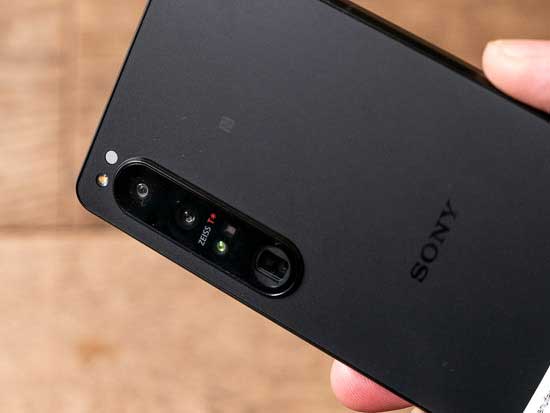 |
Before we get into the nitty gritty of the camera and apps, let’s take a look around the sleek and slender Xperia 1 IV, which really hasn’t changed all that much in terms of its design from last year’s model.
It’s still got an ultra-wide 6.5-inch, 4K HDR OLED (3840×1644 pixel) screen with 120Hz refresh rate and an unusual 21:9 aspect ratio that instantly separates it from its main rivals. With a 1,000,000:1 contrast ratio and 10-bit equivalent display, colours are rendered beautifully.
Asides from being the perfect format for watching movies and gaming, there are a few other benefits to ultra-wide screens.
With a maximised display size, the ‘multi-window’ Android function that allows you to view and operate two apps simultaneously has enough room to breathe – it’s a genuinely usable option on this device.
The ultra-wide 21:9 aspect ratio of the screen also provides a cleaner display for image making, being perfectly suited to video, but also for photography.
That’s because in the Photo Pro app, the main camera functions and menus are displayed in the empty space off to the right-hand side of the best quality 4:3 aspect ratio live view.
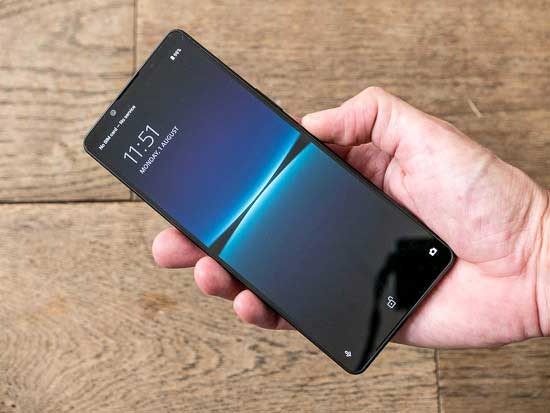 |
Overall, the screen is great, especially as the peak brightness has been boosted by 50% to make it more usable in bright outdoor conditions, addressing one of our key criticisms of the previous model.
The phone itself is significantly narrower than other 6.5-inch phones and therefore easier to hold. However, its long format is very unwieldy for single-hand use and you’ll generally want to have both of your hands free for using the camera.
Design-wise, Corning Gorilla Glass Victus on both sides make the Xperia 1 IV a tough phone. You will still want to buy a protective case though, not least of which because the smooth surface is rather slippery.
It also offers water resistance to an IP65 rating and dust resistance to an IP68 rating.
The battery has an increased 5,000mAh capacity, a big improvement over the Xperia 1 III, and can be charged to 50% in around 30 minutes with the XQZ-UCI charger. Note that Sony do not provide a charger or cable in the box for environmental reasons.
You’ll easily get a full day’s use on a single charge, a performance that matches up to the main competition. There is also compatibility with a 15W wireless charger dock, although again such a unit is not supplied with the phone.
A further look around the phone reveals the single SIM/ micro SDXC card slot, volume control, on/off power button with integrated fingerprint sensor, and a button that can be used for image capture with the camera. There’s also a proper 3.5mm headphone jack, too, plus a USB-C charge port and SIM caddy, while the somewhat superfluous dedicated Google Assistant button from the Mark III model has thankfully disappeared.
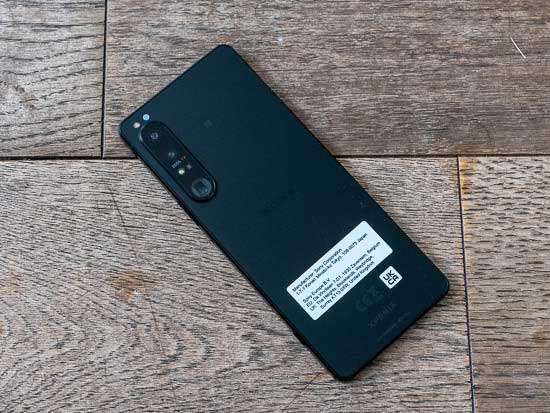 |
For quicker and easier access, we would still like to see an on-screen fingerprint scanner, instead of the integrated power on/off button scanner.
As standard on the UK/European model, the internal memory is a generous 256GB and a micro SDXC card card be installed with support for cards up to 1TB. The US version ships with an even larger 512GB of internal memory.
On the rear is the triple lens camera, flash and a 3D iToF sensor used for autofocus and depth sensing. Thankfully, the lenses are positioned in the upper left as you hold the camera in landscape format for taking photos, meaning your fingers are much less likely to get in the way.
The primary rear lens has a 24mm focal length with 82° field of view and maximum f/1.7 aperture.
You then have the new dual telephoto 85mm and 125mm camera with 28° and 20° fields of view and f/2.3 and f/2.8 maximum apertures respectively, plus the 16mm ultra-wide lens with 124° field of view and f/2.2 maximum aperture.
By far the biggest attraction of the Xperia 1 IV for keen photographers is the new optical zoom that runs from 3.5x to 5.2x, providing a seamless focal range of 85-125mm.
While we do miss the 70/105mm dual lens from last year’s model, being able to zoom to anywhere in the 85-125mm range either using the onscreen slider or the physical volume buttons is a pretty amazing feature for a smartphone, quite unlike anything we’ve ever experienced before in fact.
The effective 40mm range may be a little limited, but it does cover everything headshots to modest telephoto subjects, all without any loss in quality. We hope to see Sony employ this technology on other Xperia camera modules – perhaps a 24-50mm standard zoom, for example?
 |
It’s also possible to digitally zoom in with any of those lenses, up to a maximum of 375mm when using the 24mm lens.
There is also a single front-facing ‘selfie’ camera with improved 12MP resolution, 78° field of view and f/2.0 maximum aperture.
While out and about, we have really appreciated what each of the 16mm, 24mm and 70/105mm lenses bring. For landscape scenarios, that ultra-wide lens is particularly useful. We largely ignored the digital zoom because of the adverse impact on image quality, and strongly suggest that you do the same.
Each lens offers a maximum 12MP image size at 4:3 aspect ratio, while using a different area of the new sensor, with the primary 24mm lens utilising the sensor fully. And the camera sensor is 1/1.7”, which is 50% larger unit than the one found in the original Xperia 1.
It seems strange to consider 12MP a low resolution for a smartphone, but this very same ethos has served the photo quality in Apple iPhone and Google Pixel phones very well.
For photography and video there are two main ways to control the camera, through the dedicated Cinema Pro and Photo Pro apps or through the new Basic mode, which has effectively replaced the native camera app.
Note that the Basic mode is the only one that lets you use an onscreen shutter button – the more advanced shooting modes require you to use the physical shutter button instead.
In the Basic mode, you can switch between the four different focal lengths, adjust brightness via a slider, manually add a bokeh effect with the 24mm, 85mm and 125mm lenses only (bokeh is the word used to describe the aesthetic quality of out-of-focus areas), select the drive mode, flash mode and aspect ratio, and switch to the front facing camera. For videos, you can adjust the brightness, turn HDR on/off, and turn the Torch on/off.
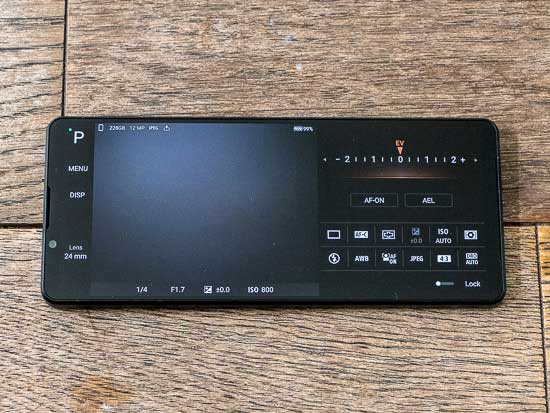 |
There are a few additional photo modes; panorama (which works really well), ‘slow motion’ (for 120fps full HD videos), Portrait Selfie, and Creative effect (for various filters including Old Film, Mirror and Harris Shutter).
To switch to the more advanced shooting modes, you more simply tap Basic in the top-right corner, which reveals a horizontal menu with five other options – Auto, P, S, M and MR.
Making the most of that ultra-wide display, the layout in the Pro apps is brilliant. Sony Alpha users will be instantly familiar with the menu layout, with Auto and PSM exposure modes, EV compensation, AF-On and AEL buttons, drive mode, AF mode, focus area, ISO, metering, flash, white balance, Face/ Eye detection AF, file format, aspect ratio and dynamic range optimiser/HDR.
There’s even a Lock slider to prevent the camera settings from being inadvertently changed. A histogram, grid lines and level gauge can all be displayed in real time too.
Our only criticism of the Photo Pro UI is that the menu layout still doesn’t automatically rotate when using the camera in portrait mode, which makes using the various onscreen icons a lot more difficult than in landscape mode. Strangely, portrait orientation does work in the Basic mode, but not in any of the other more advanced modes,
Photos are taken in the Photo Pro app using the shutter button on the side of the phone. Unlike the standard camera app, there is no on-screen shutter button option. We found the side shutter button a little on the stiff side, especially when trying to get a grip on the slippery rear surface. Ideally you’ll have both hands available to hold the phone.
 |
Ultimately, those who know a bit about photography will really enjoy the Photo Pro App. Just like in the latest Sony Alpha cameras, the continuous auto-focusing system in the Xperia 1 IV proved to be excellent in a wide range of scenarios.
This is helped by the addition of real-time tracking straight from the Alpha range of mirrorless cameras to all three camera modules (it was only available for the 24mm camera on the Mark III). This feature can accurately detect and focus on a subject and then keep tracking it even if it temporarily moves out of sight.
Sony’s industry-leading real-time face and eye detection AF is available here for both people and animals and has unerring accuracy and reliability.
There is the reassurance that continuous AF is on the money via those signature green squares that you get displayed over your tracked subject – be it face or eye detection.
Then there are the drive modes supported by fast continuous AF – up to 20fps with continuous AF and AE. That headline-grabbing continuous high drive mode is sadly only available when using the 24mm lens only, though, while the other lenses are supported with a still pretty fast 10fps continuous low drive mode.
In low contrast light, AF is excellent too, for a phone. Whatever the scenario, the Xperia 1 IV is lightning quick for focus and capture. It almost seems absurd (in a good way) to have such action-photography-friendly features on a “mere” phone.
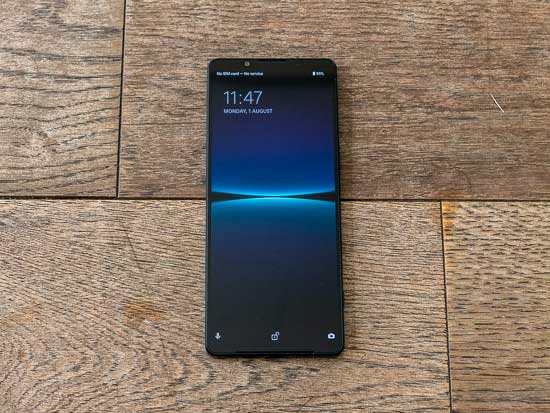 |
We also need to comment on the Video Pro app for video. You get 4K (3840×1644) or 2K (2520×1080) capture at up to an improved 120fps and up to 5x slow-motion mode, plus eight colour grade presets in addition to a standard look. The shutter is automatically adjusted according to your FPS, whether it is 24, 25, 30 or 60fps – that’s really helpful.
All four focal lengths are available for video mode, although not all FPS options are. With a fixed aperture of f/1.7 to f/2.8 depending on the lens in use, direct sunlight is too bright even using the base ISO 50 setting and certainly when shooting at 24fps. We couldn’t find an ND filter effect option to reduce light transmission. So if you want to shoot video in sunlight, 60fps is your only real option.
Video AF is good albeit with a little ‘twitching’ as it makes those micro adjustments, while manual focus is controlled by selecting the distance on a slider.
There is a really neat feature to select two manual focus presets (‘A’ and ‘B’) on the slider to make an immediate switch between those two distances. We can see a lot of use for this feature and are still pinching ourselves that this is on a phone! Manual focus transitions are really smooth.
A general sour observation about the Xperia 1 IV is that not all features are available in all modes or for all four focal lengths and it’ll take a little time to work out what is indeed possible.
All in all, the Xperia 1 IV is an even more capable device for both photo and video recording than the previous Mark III version, backed up by a more powerful processor, brighter display, longer battery life, 4K/120p video and a much more flexible telephoto camera that has to be experienced to be believed.
Image Quality
All of the sample images in this review were taken using the 12 megapixel JPEG setting, which produces an average image size of around 7Mb.
Noise
The Sony Xperia 1 IV offers an ISO range of 64-6400, plus an auto ISO setting if you want to let the camera take control. The ISO setting can be shifted in 1/3EV steps.
We have included identical shots taken at the base ISO of 64 and then every full ISO stop between ISO 100 and 6400, which is almost eight stops in all.
| JPEG | RAW |
|
ISO 64 (100% Crop) |
ISO 64 (100% Crop) |
 |
 |
|
ISO 100 (100% Crop) |
ISO 100 (100% Crop) |
 |
 |
|
ISO 200 (100% Crop) |
ISO 200 (100% Crop) |
 |
 |
|
ISO 400 (100% Crop) |
ISO 400 (100% Crop) |
 |
 |
|
ISO 800 (100% Crop) |
ISO 800 (100% Crop) |
 |
 |
|
ISO 1600 (100% Crop) |
ISO 1600 (100% Crop) |
 |
 |
|
ISO 3200 (100% Crop) |
ISO 3200 (100% Crop) |
 |
 |
|
ISO 6400 (100% Crop) |
ISO 6400 (100% Crop) |
 |
 |
Focal Range
Three front lenses provide four equivalent focal lengths of 16mm, 24mm, 85mm and 125mm, with the 24mm being the primary lens. Each lens can digitally zoom in, with a maximum reach of 375mm when using the 24mm lens.
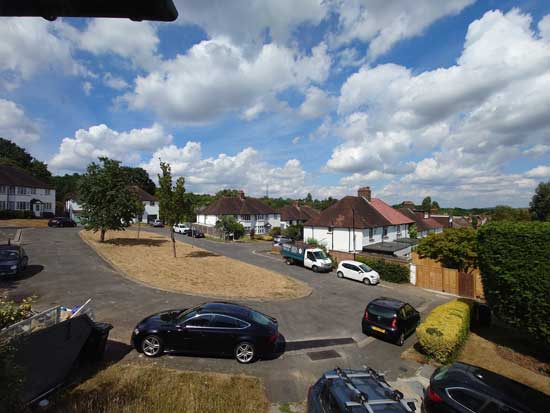
16mm
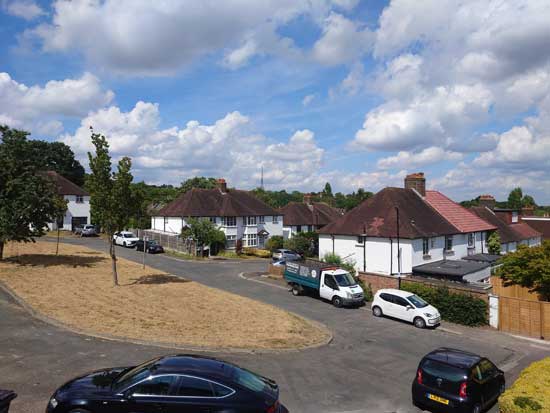
24mm
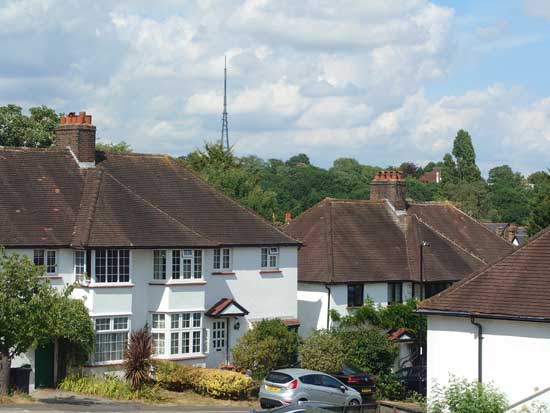
85mm

125mm
Macro
As with any small-sensor smartphone, the Xperia 1 IV has decent macro capabilities. It’s minimum focus distance is approximately 10cm.

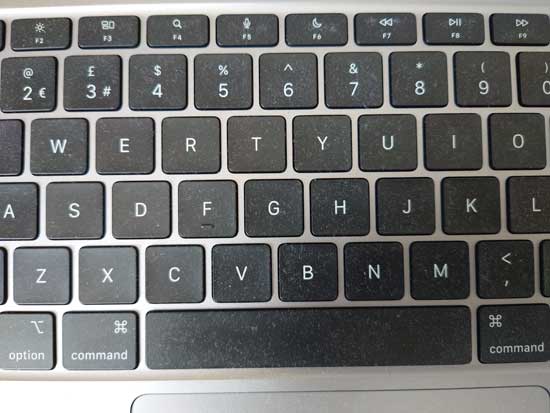



Flash
The flash options are; auto, fill-flash, red-eye reduction, off and torch. Depending on the lens choice and camera settings, not all flash options are always available.

Off

Fill

Red-eye Reduction
DRO / HDR
The D-Range Optimiser (DRO) setting, which is set to Auto by default, attempts to balance the highlight and shadow areas of the image. There is also an Auto HDR setting which produces a more extreme optimisation. You can also choose to turn both settings off.

DRO Off
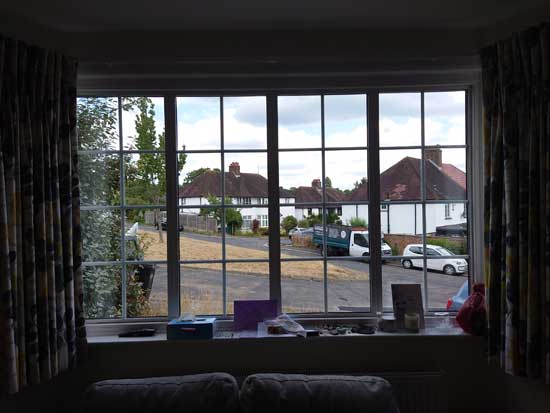
DRO On
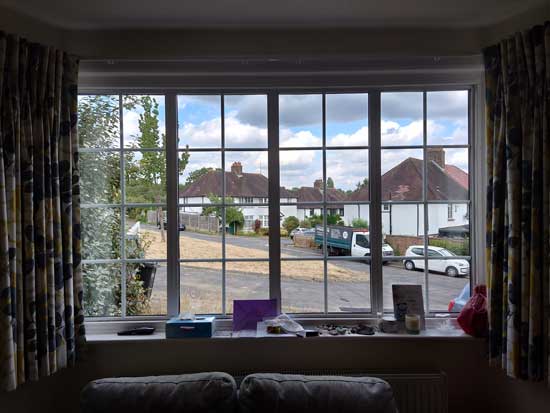
HDR On
Night
Shutter speed and ISO is automatic in the standard camera app, but in the Photo Pro app those settings can be manually adjusted. The maximum camera settings for night photography is a 30 second shutter speed and ISO 6400.

Sample Images
This is a selection of sample images from the Sony Xperia 1 IV camera, which were all taken using the 12 megapixel JPEG setting. The thumbnails below link to the full-sized versions, which have not been altered in any way.
Sample RAW Images
The Sony Xperia 1 IV enables users to capture RAW and JPEG format files. We’ve provided some Sony RAW (DNG) samples for you to download (thumbnail images shown below are not 100% representative).”
Sample Movies & Video
This is a sample 4K movie at the quality setting of 3840×2160 pixels at 25 frames per second. Please note that this 11 second movie is 75Mb in size.
This is a sample 4K movie at the quality setting of 3840×2160 pixels at 60 frames per second. Please note that this 11 second movie is 121Mb in size.
This is a sample 4K movie at the quality setting of 3840×2160 pixels at 30 frames per second. Please note that this 11 second movie is 78Mb in size.
This is a sample 4K movie at the quality setting of 3840×2160 pixels at 25 frames per second. Please note that this 11 second movie is 73Mb in size.
This is a sample 4K movie at the quality setting of 3840×2160 pixels at 24 frames per second. Please note that this 16 second movie is 112Mb in size.
This is a sample 5x slow-motion movie at the quality setting of 3840×2160 pixels at 120 frames per second. Please note that this 70 second movie is 245Mb in size.
Product Images


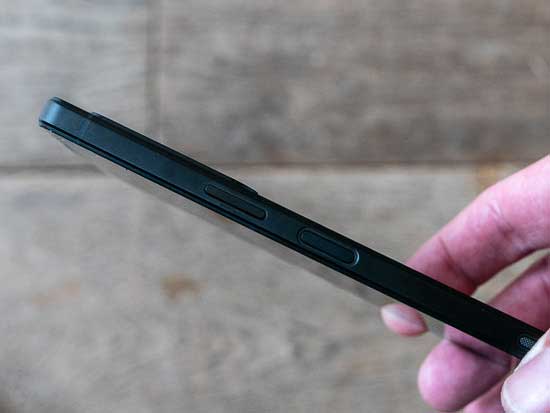

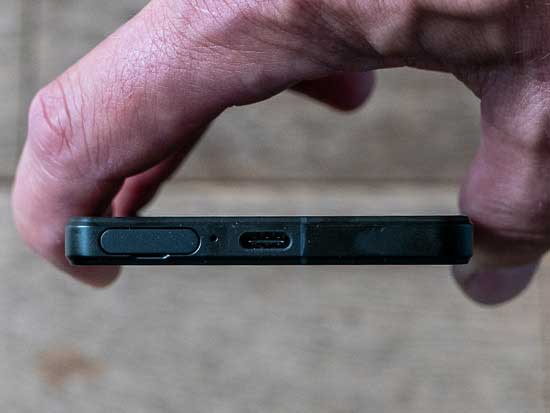
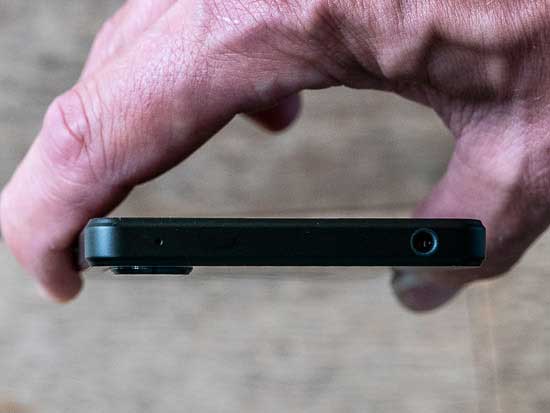

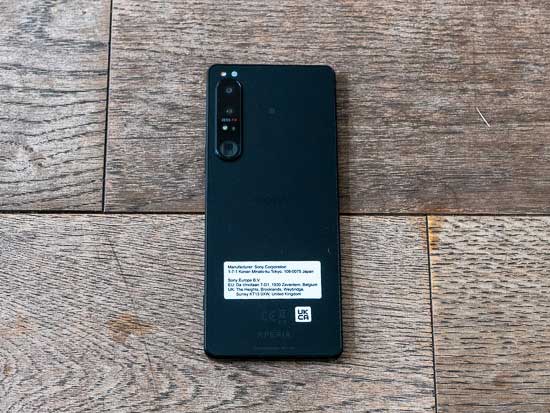
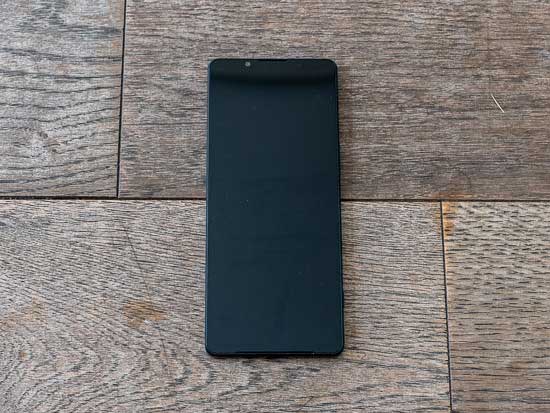

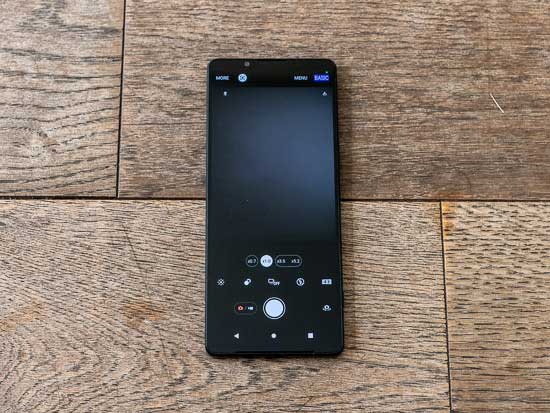

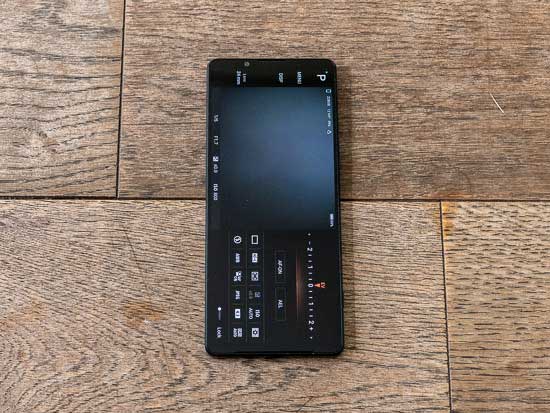

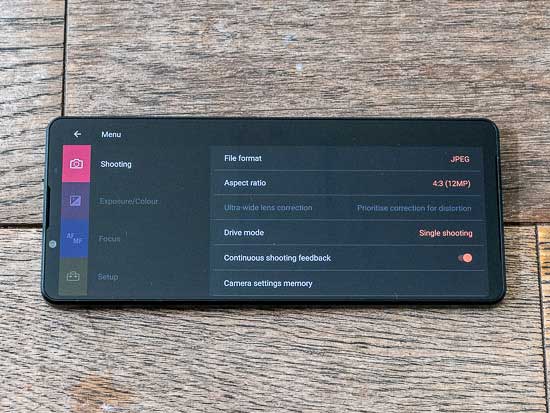
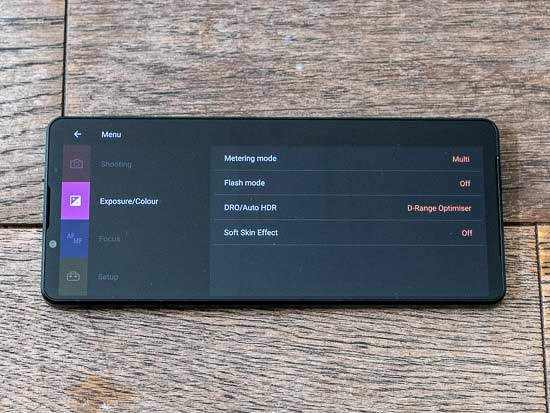
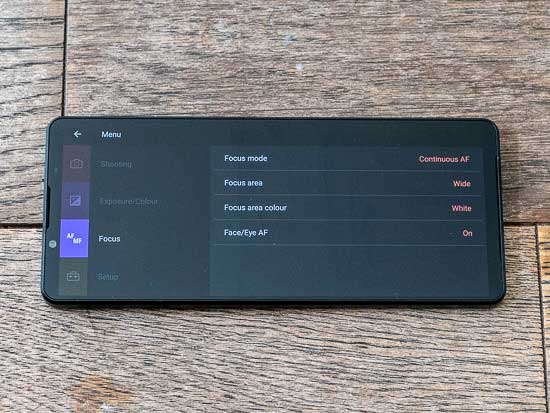
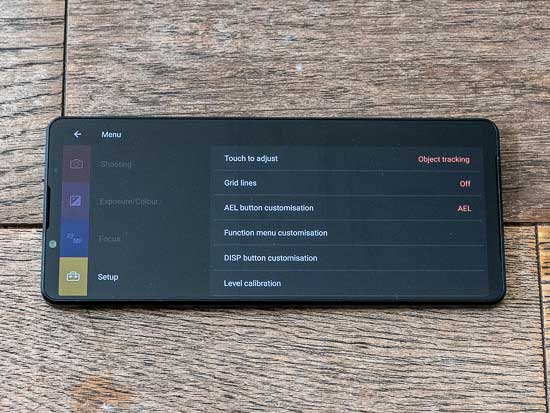
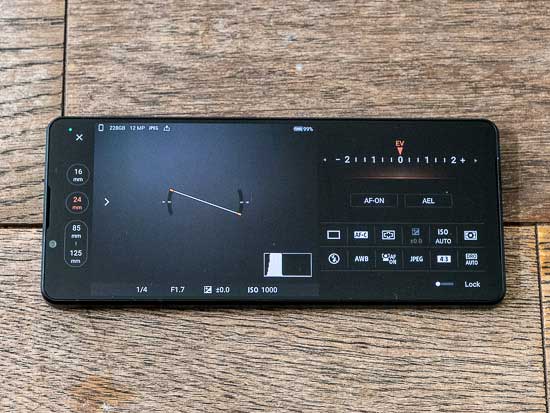
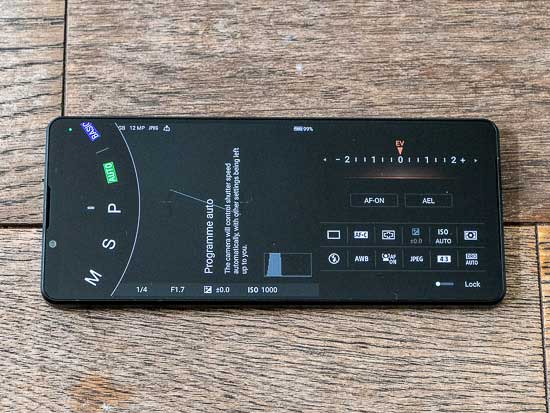
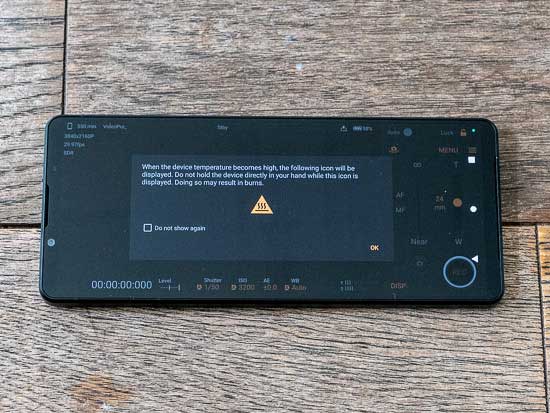

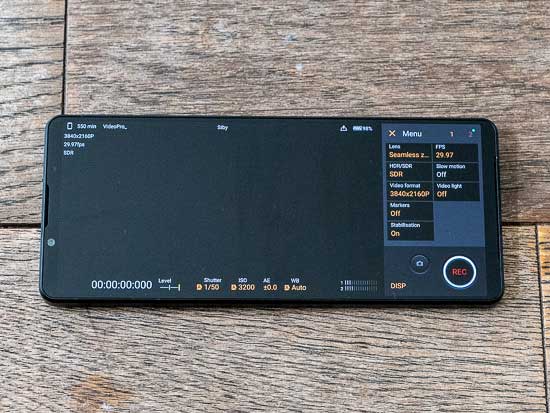
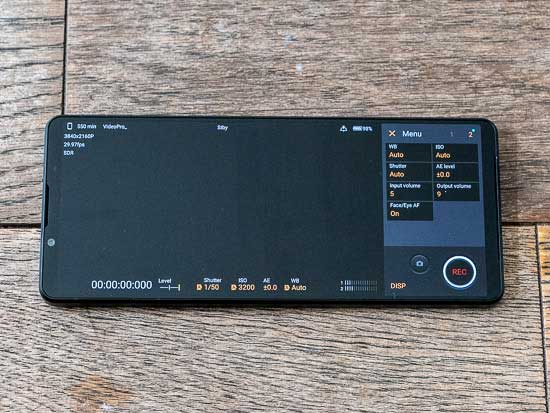
Conclusion
It may not represent a huge leap forward from last year’s version, but the new Sony Xperia 1 IV is still the best ever Xperia phone for keen photographers and videographers, and indeed one of the best smartphones for those groups, full stop.
It’s still a rather unique device, though, with its unusual 21:9 aspect ratio display and a camera interface that is unashamedly aimed at more experienced users who can really take advantage of all the features and the excellent Pro apps that the Xperia I IV offers.
Grabbing this year’s headlines is the true optical zoom module that provides a seamless zooming experience from 85-125mm focal length with no drop in image quality.
This makes the Xperia I IV especially great for portraits, while the 16mm and 24mm modules have wide-angle subjects covered – only the circa 50mm middle-ground is missing from what is otherwise an excellent triple array of cameras.
Other key improvements that make this years model worth buying are the even brighter display, faster processor, longer battery life, 4K/120p video and real-time AF tracking available for all the cameras, and the addition of live-streaming.
We continue to love the Xperia’s Photo Pro, Video Pro and Cinema Pro apps, which provide an amazingly in-depth shooting experience for what is after all just a smartphone. We only wish that all of the shooting modes supported portrait orientation, and not only the Basic mode.
If you are a Sony Alpha camera user or simply a photo enthusiast, the layout and handling of the Photo Pro app is arguably the best around in any smartphone, clearly designed for those who desire more creative control. If you’ve ever been frustrated by your phone’s camera app, make sure to try out the Xperia interface to see what it should really be like.
On the flip side, less experienced users may be somewhat alienated when it comes to the camera, as despite the inclusion of the Basic mode, ultimately you’ll still have to work out a lot of things for yourself.
With an RRP of £1,299 / $1,599, the launch price has once again crept up by another £100/$300 when compared to last years Xperia III model, pitching it directly against the very best flagship products from the likes of big-hitters like Samsung and Apple, not to mention cheaper flagships from Google and OnePlus.
Overall, though, the Xperia 1 IV offers budding videographers and photographers one of the best shooting experiences and feature-sets currrently available from any smartphone, which I’m sure you’ll agree is no mean feat…
| Ratings (out of 5) | |
|---|---|
| Design | 4.5 |
| Features | 4.5 |
| Ease-of-use | 4.5 |
| Image quality | 4.5 |
| Value for money | 3.5 |
Main Rivals
Listed below are some of the rivals of the Sony Xperia 1 IV.
The iPhone 13 Pro is Apple’s second-tier smartphone for 2021, offering exactly the same camera setup as the more expensive Pro Max flagship model, but with a smaller screen. With prices starting at around £$949, is this the best smartphone that you can buy for keen photographers? Read our in-depth iPhone 13 Pro review now, complete with full-size sample photos and videos…
The Apple iPhone 13 is one of four new iPhones released for 2021, released at the same time as the Mini, Pro and Pro Max models. With prices starting at around £$779, is this a good fit for keen photographers? Read our in-depth iPhone 13 review now, complete with full-size sample photos and videos…
The new Honor 50 marks the welcome return of Google Play services to the Huawei/Honor empire, but what else does this mid-range smartphone offer to keen photographers and videographers? Find out now by reading our in-depth review of the Honor 50, complete with full-size sample photos and videos.
The Galaxy S21 Ultra is Samsung’s new flagship smartphone for 2021. Featuring a quad-camera setup with 108 megapixels and a 10x optical zoom, 8K video recording, a 5000mAH battery and 5G connectivity, is this the ultimate smartphone for keen photographers? Find out now by reading our expert Samsung Galaxy S21 Ultra review, complete with full-size sample photos and videos…
The Sony Xperia 1 III is a new flagship smartphone for 2021 that has a lot to offer keen photographers and videographers. This includes 20fps burst shooting, real-time AF tracking and real time eye AF for humans and animals, 16mm, 24mm, 70mm and 105mm focal lengths, and advanced Photo Pro and Cinema Pro apps. Read our in-depth Sony Xperia 1 III review, complete with full-size sample photos and videos, to find out if this new smartphone can justify its £1199 / $1299 price-tag…
The Sony Xperia 5 III is a new mid-range smartphone that inherits a lot of the core features from the flagship Xperia 1 III model, in a smaller and more affordable form factor. Read our in-depth Sony Xperia 5 III review, complete with full-size sample photos and videos…
Not content with introducing their flagship Xperia I III smartphone earlier this year, Sony have taken things to a whole other level with the launch of the brand new Xperia PRO-I. Sporting a price-tag of £1,599 / $1,799, is this the ultimate smartphone for experienced photographers and videographers? Find out now by reading our Sony Xperia PRO-I review…
Review Roundup
Reviews of the Sony Xperia 1 IV from around the web.
Although Sony makes some of the best cameras on the market, it’s struggling to keep up with the likes of the big players in the smartphone market, most notably Samsung and Apple. In recent years, Sony has released a number of high-end smartphones, with high-price tags and camera specifications which are designed to appeal hugely to enthusiast photographers – but have they succeeded in producing something special with the bizarrely named Sony Xperia 1 IV.
Read the full review »
Sony’s color science and camera apps are a cut above the smartphone competition, and with its incredible new optically zooming lens, which adds the full 85-135mm range, the Sony Xperia 1 IV is a wonder. Despite being an incredibly compelling camera phone though, heat management issues and occasional UI gremlins hold this phone back from a five-star score, especially given its high price.
Read the full review »
The Xperia 1 IV isn’t a huge upgrade over the Xperia 1 III but has a few new tricks for avid photographers and videographers. Just be prepared to pay well over the odds for them.
Read the full review »
Specifications
Size
- DIMENSIONS
- 165 x 71 x 8.2 mm
Weight
- WEIGHT
- 185 g
Display
- DISPLAY SIZE
- 6.5″ 21:9 Wide display
- DISPLAY RESOLUTION
- 4K HDR OLED (3840 x 1644)
- FEATURES
- 120Hz Refresh rate,
240Hz Motion blur reduction, 240Hz Touch scanning rate, Creator mode “powered by CineAlta” – Inspired by Master Monitor colour reproduction, DCI-P3 100%, ITU-R BT.2020 (REC.2020)
, Illuminant D65 White point, 10 bit tonal gradation
, X1™ for mobile
- IMAGE PLAYBACK FORMAT
- JPEG, GIF, PNG, BMP, WebP, WBMP, HEIF, DNG, CR2, NEF, NRW, ARW, RW2, ORF, RAF, PEF, SRW, AVIF
- VIDEO PLAYBACK FORMAT
- H.263, H.264, H.265, MPEG-4 Video, AV1, VP8, VP9
Durability
- WATER RESISTANT
- Water resistant (IPX5/IPX8)
, Dust proof (IP6X)
- DURABILITY
- Corning® Gorilla® Glass Victus®
Camera
- CAMERA
- Triple lens camera
Rear Camera (1)
- RESOLUTION
- 12MP
- SIZE
- 1/1.7″ Exmor RS™ for mobile sensor
- APERTURE
- F1.7
- FOCAL LENGTH
- 24 mm
- FIELD OF VIEW
- 82°
Rear Camera (2)
- RESOLUTION
- 12MP
- SIZE
- 1/3.5″ Exmor RS™ for mobile sensor
- APERTURE
- F2.3 (85 mm) – F2.8 (125 mm)
- FOCAL LENGTH
- 85 mm – 125 mm
- FIELD OF VIEW
- 28° (85 mm) – 20° (125 mm)
Rear Camera (3)
- RESOLUTION
- 12MP
- SIZE
- 1/2.5″ Exmor RS™ for mobile sensor
- APERTURE
- F2.2
- FOCAL LENGTH
- 16 mm
- FIELD OF VIEW
- 124°
Camera Features
- FEATURES
- Photography Pro, ZEISS® quality lenses calibrated specifically for Xperia 1 IV, ZEISS® T* Coating, 120fps read out speed, Up to 20fps AF/AE burst
, Up to 60 times per second continuous AF/AE calculation, Real-time Eye AF (Human, Animal)
, Real-time Tracking
, 3D iToF, RGB-IR, OIS photo
, Photo flash, Photo light, Hybrid zoom 15.6x (based on Wide camera 24mm), AI Super Resolution Zoom, HDR (High Dynamic Range) photo
- IMAGE CAPTURE FORMAT
- JPEG (.jpg), RAW (.dng)
Video Recording
- FEATURES
- Cinematography Pro “powered by CineAlta”, Videography Pro, 4K HDR Video recording 24, 25, 30, 60 and 120fps
, OIS and EIS Video
, Optical SteadyShot™ with FlawlessEye™
, SteadyShot™ with Intelligent Active Mode (5-axis stabilization)
, Intelligent wind filter
- VIDEO RECORDING FORMAT
- .mp4 (H.264, H.265)
Front Camera (1)
- RESOLUTION
- 12MP
- SIZE
- 1/2.9″ Exmor RS™ for mobile sensor
- APERTURE
- F2.0
- FIELD OF VIEW
- 83°
- FEATURES
- HDR (High Dynamic Range) photo, SteadyShot™ with Intelligent Active Mode (5-axis stabilization), Portrait selfie, Display flash, Hand gesture
Audio
- HI-RES
- Hi-Resolution Audio, High-Resolution Audio Wireless (LDAC)
- OTHER FEATURES
- 3.5mm audio jack, 360 Reality Audio Certified
, 360 Reality Audio Upmix
, Full-stage stereo speakers, Dolby Atmos®
, DSEE Ultimate, Stereo Recording, Qualcomm® aptX™ Adaptive
- PLAYBACK FORMAT
- AAC-LC, AAC+, eAAC+, AAC-ELD, AMR-NB, AMR-WB, FLAC, MP3, MIDI, Vorbis, PCM, Opus, DSD, Dolby Atmos, Dolby AC-4, 360 Reality Audio Music Format
- RECORDING FORMAT
- AAC-LC , AAC+, AAC-ELD, AMR-NB, AMR-WB
Game
- FEATURES
- PS Remote Play
, DUALSHOCK®4 / DualSense™ compatibility
, Game enhancer
Entertainment
- FEATURES
- Dynamic Vibration System
Memory & Storage
- RAM
- 12GB
- INTERNAL MEMORY
- 256GB UFS
- EXTERNAL MEMORY
- microSDXC support (up to 1 TB)
SIM Capability
- NUMBER OF SIM
- Dual SIM
- SIM TYPE
- nanoSIM / eSIM
Operating System
- VERSION
- Android™ 12
Processor
- CPU
- Snapdragon® 8 Gen 1 Mobile Platform
Battery
- CAPACITY
- 5000 mAh
- CHARGING TYPE
- USB Power Delivery (USB PD) fast charging
- OTHER FEATURES
- Xperia Adaptive Charging, Battery Care, STAMINA Mode, Qi Wireless charging
, Battery Share function
Networks
- 2G BAND
- 850, 900, 1800, 1900
- 3G BAND
- 2100 (Band 1), 1900 (Band 2), 1700 (Band 4), 850 (Band 5), 800 (Band 6), 900 (Band 8), 800 (Band 19)
- 4G BAND
- 1, 2, 3, 4, 5, 7, 8, 12, 13, 17, 19, 20, 25, 26, 28, 29, 32, 34, 38, 39, 40, 41, 46, 66
- 5G BAND
- n1, n3, n5, n7, n8, n20, n28, n38, n40, n41, n77, n78
Connectivity
- WI-FI
- IEEE802.11a/b/g/n/ac/ax, 2.4/5/6GHz
- LOCATION
- A-GPS, A-GLONASS, Beidou, Galileo, QZSS
- BLUETOOTH
- Bluetooth® 5.2 wireless technology, BluetoothⓇ LE Audio
- USB TYPE
- Type-C®
- USB VERSION
- SuperSpeed USB 5Gbps (USB 3.2)
- OTHER FEATURES
- Smart connectivity, Google Cast, NFC, Output video/image via Display Port support TypeC Cable or USB-C to HDMI Adapter Cable (Display port 4K/60fps)
Sensors
- SENSOR TYPE
- Fingerprint sensor
Accessibility
- ACCESSIBILITY
- Hearing Aid Compatibility (HAC)
, Teletypewriter (TTY)
/SERVICES: Live Transcribe
, Sound notifications
/SCREEN READERS: Select to Speak
, TalkBack, Text-to-speech output
/DISPLAY: Font size, Display size, Dark theme, Magnification, Colour correction, Colour inversion, Large mouse pointer, Remove animations /INTERACTION CONTROLS: Accessibility Menu
, Switch Access
, Click after mouse pointer stops moving, Power button ends call, Auto-rotate screen, Touch & hold delay, Time to take action (Accessibility timeout), Vibration & haptic strength, System navigation /AUDIO & ON-SCREEN TEXT: Mono audio, Audio balance, Caption preferences /EXPERIMENTAL: High contrast text, Shortcut from lock screen









